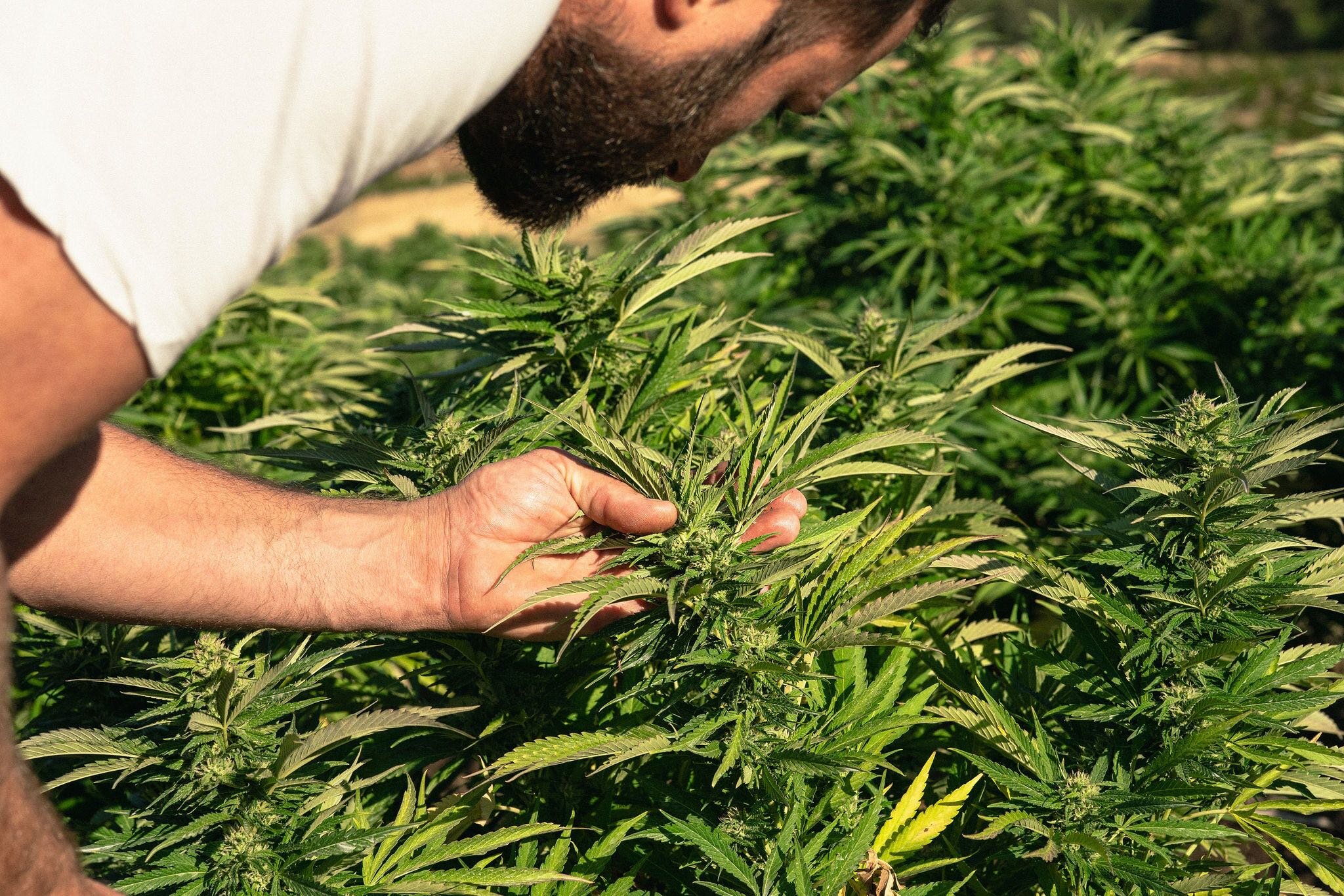Leaning in to the scent of a growing plant.
Photo: @jenny.allie
When combined with hydrogen molecules (like in water), carbon forms terpenes, among other types of hydrocarbons. Terpenes are influenced by the climate, the maturity of the soil that the plant is grown in, the nutrients it is grown in, and the cultivar (genetics). They compose the key aspects of the flower that is one indication of the quality of the soil it is grown in- a complex and fragrant nose and taste signal a flower that was grown in rich soil teeming with microbiology such as fungi, microbes, and lots of biodiversity.
Some of the most common recognizable scents are the smell of pine needles, citrus, black pepper, lavender, and hops. One reason that terpenes exist in the natural world to aid in protecting plants from environmental stressors. They can provide the same sort of benefits for us, and different terpenes have anti-bacterial, anti-oxidant, anti-inflammatory, and anti-fungal properties.

